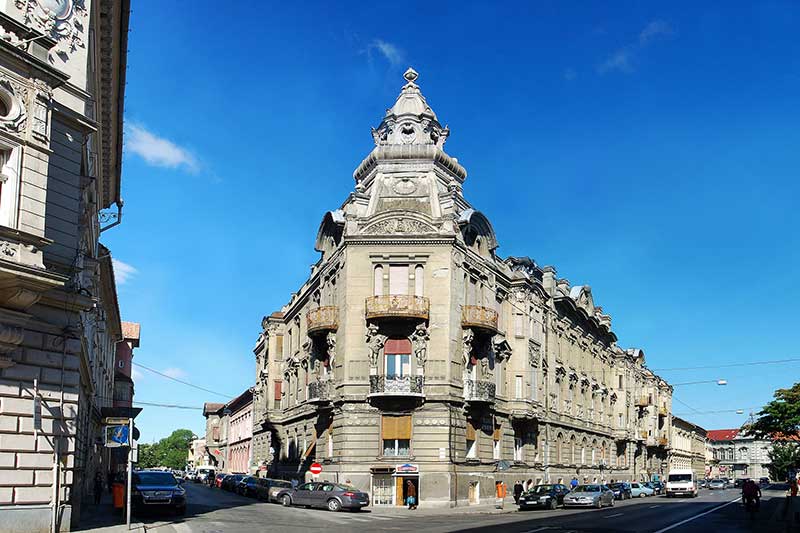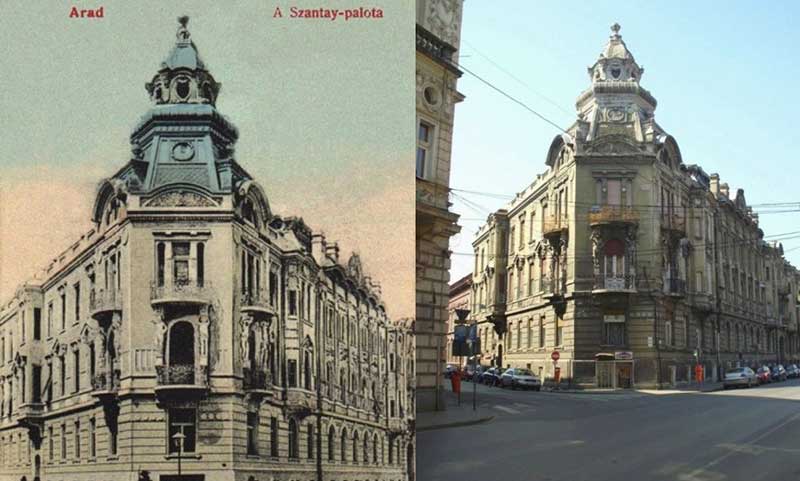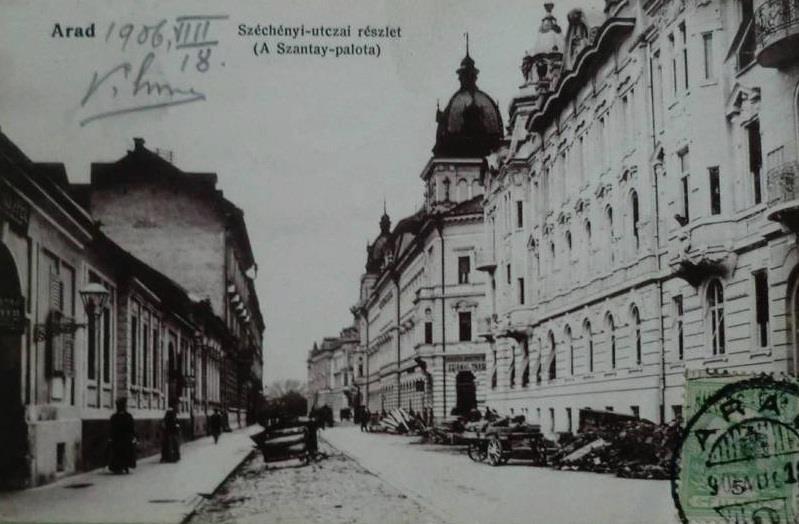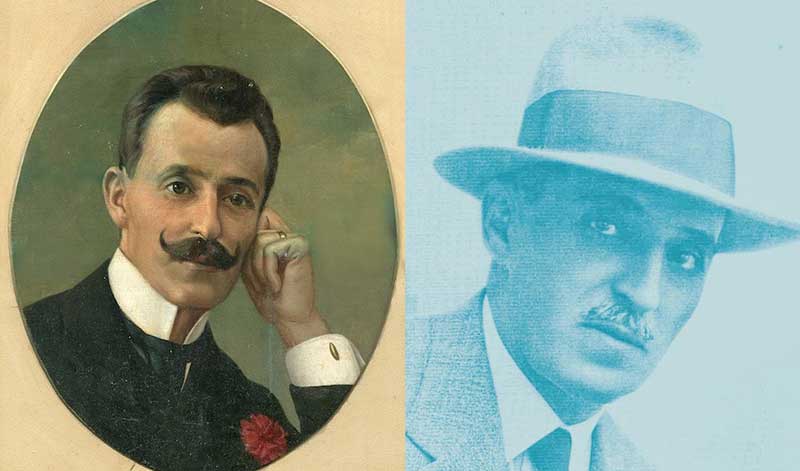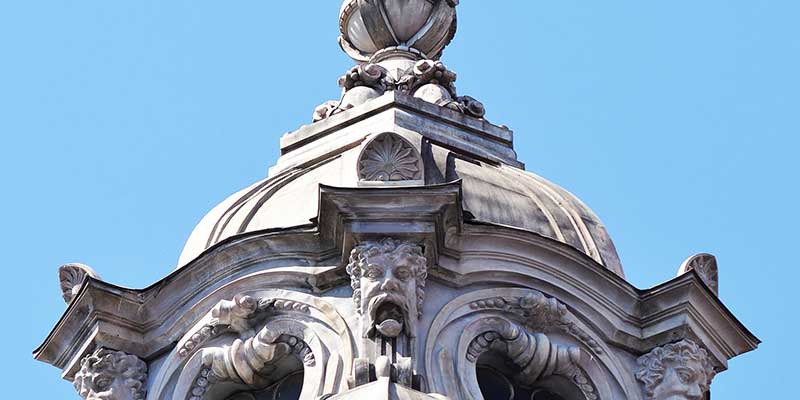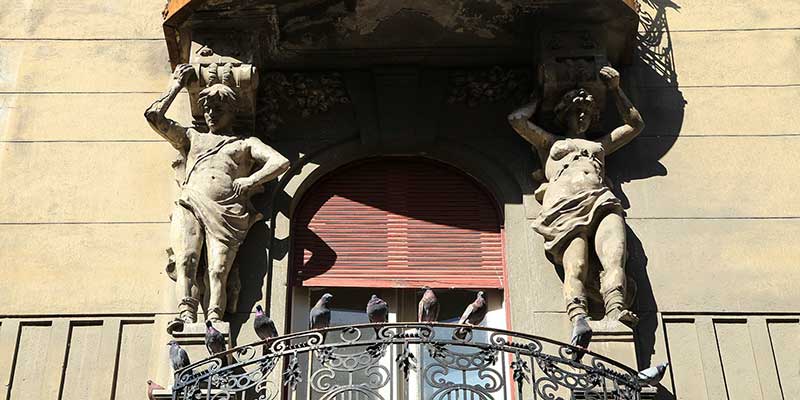Szantay Palace Arad – Summary
The Szantay Palace (Palatul Szántay) is a three-story early 20th-century secession style architectural 20th-century in the city of Arad, Romania. The palace is named after one of Romania’s most famous architects, and the man who also designed the building, Ludovic Szántay (1872 – 1961). Szántay designed the Szantay Palace to be his living headquarters. Of all of his work, the Szantay Palace was one of the few building’s developments he oversaw through to its completion. Ludovic designed buildings in different styles, but his most loved architectural style was the style he designed the Szantay Palace in, the secession style.
Szantay Palace Arad – Table of Contents
- Szantay Palace Arad – History
- Szantay Palace Arad – Architecture
- Szantay Palace Arad – Present Day
- Szantay Palace Arad – Visitor Info
Szantay Palace Arad – History
Ludovic Szántay (birthname Lajos Szantay) was born in Arad on February, 20th, 1872 to a wealthy family. His family put great importance on education and from a young age instilled the same in Ludovic. Ludovic attended primary school in Arad, got his high school education in Budapest, completed his architectural studies at the Zurich Polytechnic in Switzerland. Besides going on to become one of the most famous architects of his era, Szántay was also a successful entrepreneur, a developer, member of multiple local committees, and a top violinist who also performed in the Arad Philharmonic Orchestra.
Szántay was arguably the most influential architect in Arad during the 19th and early 20th century. He is credited for designing over 70 different buildings in Arad, areas nearby Arad, and even in distant places such as Budapest, Hungary. His architectural genius led him to design some of Arad’s most famous and prominent buildings. Szántay’s resume of buildings include masterpieces such as The Kohn Palace, The Red Church, The Railway Station, The Cultural Palace, The Bohuș Palace, and of course The Szántay Palace.
After living a life of prominence, fame, and wealth, tragedy struck Szántay when the communist party took power in Romania. In an attempt to make “everyone equal” the communist party confiscated all of Ludovic’s properties, wealth, and other means of self-sufficiency. Szántay was left a single home he owned which eventually became his prison. The communists also barred anyone from providing any type of charity, food, or other assistance to Ludovic and his family. What followed in the remaining years of his, and his families lives, was extreme poverty, hunger, exclusion, and finally a tragic death.
Szántay was found deceased on March 8, 1961, in the attic of his home. He is said to have died by freezing to death. Evidence was found that he burned much of his life-long work, including, blueprints, drawings, and various other plans, in order to provide himself with heat. His wife had died previously, and later his daughter died a horrific death during a hunger strike. Ludovic and his family were essentially murdered in a slow, brutal, and dehumanizing way by Romania’s communist party for no fault except for having worked hard and achieving success.
Szantay Palace Arad – Architecture
Construction of the Szantay Palace took six years, from 1905 to 1911, before it was finished. The development was mainly carried out by local companies and citizens of Arad. Szántay got his inspiration for the palace from the architecture and designs of British museums of the era. Szántay designed the building to be in the shape of a backward L. The ˩ design was used so that the building could fit as a wedge in the corner between two streets and to also allow it to have a courtyard.
The Szantay Palace contains a daunting tower that’s situated on the corner where the two streets meet. The tower has a hexagon pyramid design. It was constructed with the combination of stone and sheet metal. The top of the tower contains a stone globe that was placed there to represent Szántay’s openness to the great world. The tower gives the building a truly unique and striking presence.
The palace has balconies on every side of the edifice. The second story balconies that beset the tower are magnificently adorned by male and female caryatids. The caryatids are artfully sculpted into a position that shows them holding the balconies foundation above their head with their bare arms. The wrought iron balcony railings are highly ornate and provide the building an added touch of elegance.
The walls around the building contain metallic and plaster sculpted, geometrical patterns, masks, flowers, volutes, and vegetable ornaments. The interior of the palace contains beautiful floral stained-glass windows. Inside the palace, there is also as an amazing wrought iron spiral staircase that extends from the ground to the top floor. The bow windows along the palace’s roof greatly define and outline the Secession style of the building.
The palace contains gates at different locations on multiple streets which provide access to its inside as well as to its courtyard. Its pedestrian gates are adorned with metallic ornaments. Some of the building’s entrances contain exquisite red marble steps.
Szantay Palace Arad – Present Day
The Szantay Palace is situated in one of Arad’s finest locations, off of Horia and Episcopiei Street, close to the city center and in the midst of many shops, hotels, and restaurants. The building’s ground floor contains different commercial establishments and shops, and the upper floors contain apartments. The original apartment Szantay lived in for many years is still contained within the palace.
The condition of the Szantay Palace is considered to be less than good. It’s maintenance and upkeeping have been mediocre throughout the years. There are crumbling stones and elements on the outside portion of the building. Renovations and repairs have been sparsely made on the building. Many apartments inside the palace have however been renovated and can be purchased or rented in a luxurious state.
Szantay Palace Arad – Visitor Information
Location
The Szantay Palace is located in the city of Arad’s city center at the address: Strada Horia 3. The palace is found at the intersection of Strada Horia (Horia Street) and Strada Episcopiei (Episcopiei Street).
The Szantay Palace sits on the same street as and is found directly to the east of Palatul Neumann (The Neumann Palace).
Visitation
Visitation to the palace is allowed year-round but is limited mainly to the outside as well as to the shops on the ground level.
The inside can be accessed and viewed at the approval of apartment tenants inside the building. The main attraction of the building is viewing its design and decorative elements adorned throughout.
